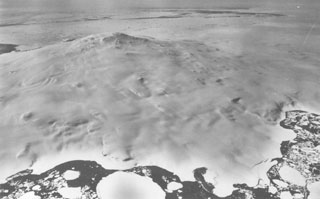Report on Siple (Antarctica) — 20 June-26 June 2012
Smithsonian Institution / US Geological Survey
Weekly Volcanic Activity Report, 20 June-26 June 2012
Managing Editor: Sally Sennert.
Please cite this report as:
Global Volcanism Program, 2012. Report on Siple (Antarctica) (Sennert, S, ed.). Weekly Volcanic Activity Report, 20 June-26 June 2012. Smithsonian Institution and US Geological Survey.
Siple
Antarctica
73.43°S, 126.67°W; summit elev. 3110 m
All times are local (unless otherwise noted)
Infrared imagery from the Metop satellite showed a possible rising steam plume from the area of Siple on 20 June. The imagery, as interpreted by Mark Drapes, indicated that the volcano was about -22 degrees Celsius, about 6 degrees warmer that the surrounding landscape, and the base of the plume was about -55 degrees Celsius. [Correction: Further investigation and/or analysis of satellite imagery by Philip Kyle (New Mexico Institute of Mining and Technology), Paul Morin (University of Minnesota), and Matthew Lazzara (University of Wisconsin) confirmed that an eruption did not occur.]
Geological Summary. Mount Siple is a shield volcano that forms an island along the Pacific Ocean coast of Antarctica's Marie Byrd Land. The massive 1,800 km3 volcano is truncated by a 4-5 km summit caldera and is ringed by tuff cones at sea level. A possible eruption cloud observed on satellite images on 18 September and 4 October 1988 was considered to result from atmospheric effects, after low-level aerial observations revealed no evidence of recent eruptions. Trachytic rocks at the summit have been Ar-Ar dated to about 227,000 and 169,000 years old.
Sources: Mark Drapes, EUMETSAT

